|
Willow
Ptarmigan at Darlington Nuclear on Lake Ontario |
|
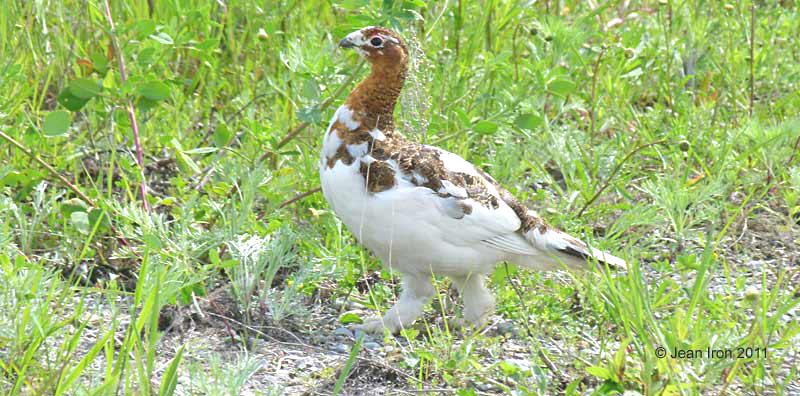 |
|
Male Willow Ptarmigan at Darlington
Nuclear on Lake Ontario on 12 June 2011 |
|
On 8 June 2011, a molting male Willow
Ptarmigan was found by Jeff Reid and photographed by Wayne Holroyd at Darlington Nuclear Station east of Oshawa.
In order for many to see it, Susan Bragg and John Peters in the
Environmental Assessment Department of Ontario Power Generation
(OPG) arranged with Brian Henshaw of Beacon Environmental for
birders to visit the site on Sunday 12 June 2011. The Willow
Ptarmigan was seen by about 150 birders and put on a great show.
|
|
|
|
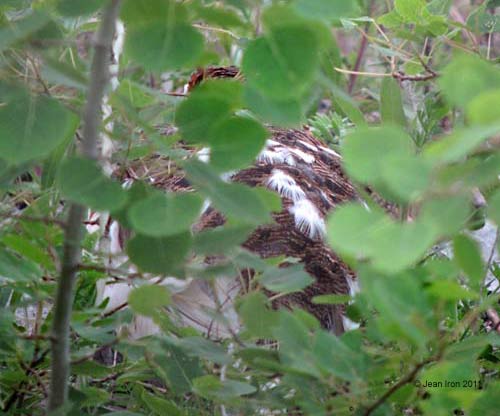 |
|
Eight of us went to the site ahead of
the main group to find the ptarmigan. Adele Labbe's sharp eyes first
located it about 7:00 a.m. as it rested under an aspen outside a
fence. It was observed eating Trembling Aspen leaves. |
|
|
|
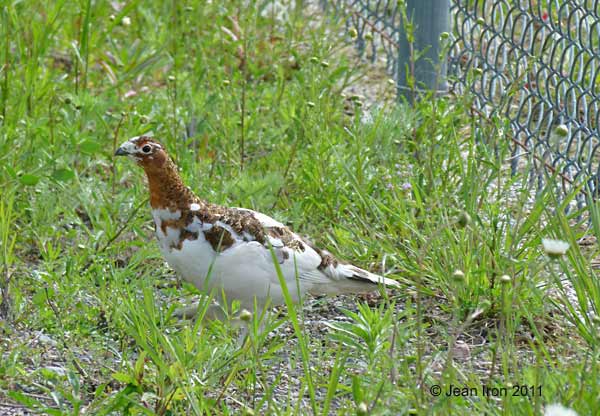 |
|
After everyone was bussed to the site,
Brian gently encouraged the ptarmigan under the fence into full view
of 150 birders. It did not fly during the several minutes it was in
view, and resumed eating shortly after returning to the other side
of the fence. |
|
|
|
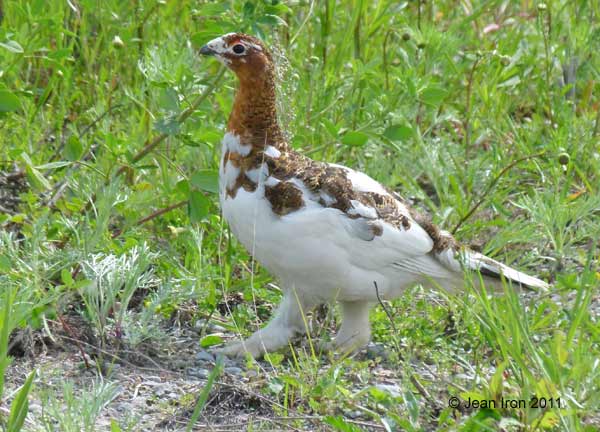 |
|
12 June 2011. The fully feathered feet
are evident in the photo above and act as snowshoes, which is an adaptation to their snowy winter
habitat.
Ptarmigan molt their foot feathers in midsummer when
the toes appear bare for a short time.
Michel Gosselin
of the Canadian Museum of Nature said about the Darlington bird
"There is a bit more white than average at this
date, but it is not surprising for a bird which is outside its
normal breeding and photoperiod area." At first we thought it
was a first year male or an adult that had not acquired full summer
plumage. |
|
|
|
 |
|
OPG provided a bus
from the Visitor Information Centre to the secure site where the
ptarmigan was. |
|
|
|
 |
|
Birders lined up in
anticipation. |
|
|
|
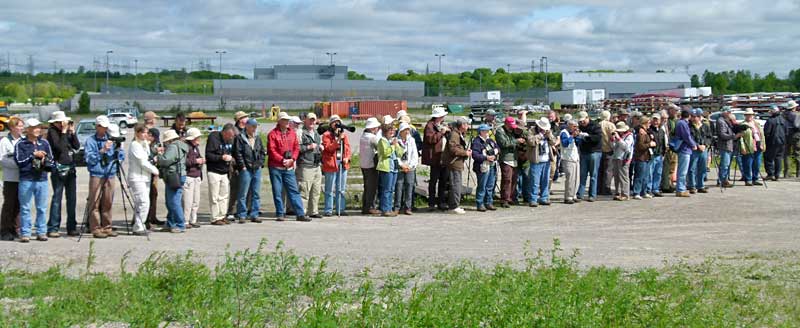 |
|
It was a great success
and everyone was happy to see this bird from the tundra. |
|
|
|
Ptarmigan
Notes and History |
|
In Ontario, Willow Ptarmigan breed
mainly on the Hudson Bay Coast, but the Darlington bird is unlikely
from Ontario's relatively small population found mostly on the
tundra strip close to Hudson Bay. Ptarmigan have not been seen even
in the Moosonee area at the south end of James Bay for about 20
years,
and ptarmigan did not irrupt south last winter in
northern Ontario.
In contrast, Quebec has a huge
breeding population because that province extents much farther north
than Ontario. Ptarmigan irrupt irregularly south to the
Lac-Saint-Jean area and north shore of the St. Lawrence River. Last winter,
2010-2011, there was a very large irruption of Willow Ptarmigan and
even a few Rock Ptarmigan into south-central Quebec. The Darlington Willow Ptarmigan is likely an
extreme overshoot or possibly a migrant that went the wrong way
following last winter's irruption.
Darlington is directly south of Quebec.
A Willow Ptarmigan that hit a
building in downtown Quebec City in March 2009 was thought to be a
migrant going south instead of returning north (fide Michel
Gosselin). Remarkably, there
was a spring specimen taken near Whitby close to Darlington on 15 May 1897 following a large
irruption in the winter of 1896-1897. This specimen is in the Royal
Ontario Museum. We will be examining its molt hoping for insights
about the plumage of the Darlington bird.
The Willow Ptarmigan is a migratory grouse. It is
thought that big irruptions occur when populations are high causing
them to move farther south into the boreal forest than usual.
Selected Historical Occurrences:
Willow Ptarmigan occurred in the thousands some winters at Quebec
City during Champlain's time in the 1600s and they were regular
south to Montreal into the 1800s. Overall numbers are either smaller
now or they are not wintering as far south or both. Some other
reports in southern Ontario include Whitby and Welcome near Lake
Ontario, Whitchurch just north of Toronto, and Bob Curry (2006) in
the Birds of Hamilton cites a record by the legendary George
North on 8 December 1945. Godfrey (1986) in the Birds of Canada
cites a record from just north of Ottawa at Chelsea, Quebec.
This record is now considered an error because there is no
documentation on file in the Canadian Museum of Nature (Michel
Gosselin, pers. comm.). |
|
|
|
Acknowledgements |
|
Ontario Power
Generation: We are indebted to Susan Bragg, John Peters
and Chris Wood of the Environmental Department at Darlington Nuclear
who organized today's viewing. Special thanks are extended to Bev
Forget in Public Affairs, the OPG Security team, OPG Operations and
OPG Management Team. |
|
|
|
Beacon
Environmental: Brian Henshaw, Adele Labbe and Ron Huizer
strategically planned how 150 birders would see the bird well. |
|
|
|
|